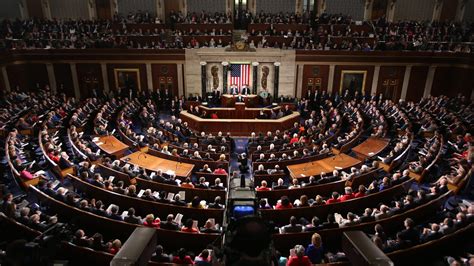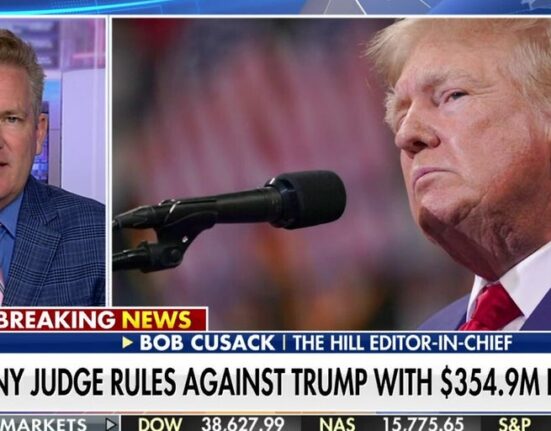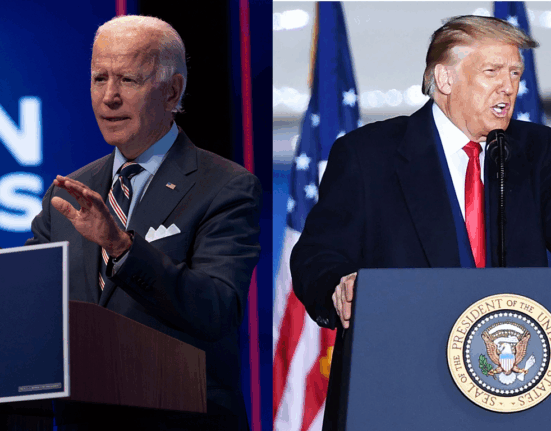[IMPORTANT: Make this 4 times longer with much more detail]
Report Aid Groups Confront a New Crisis: Trump’s Return Humanitarian organizations fear that the president’s policies may upend their work, impacting millions of people in conflict-stricken regions. By Christina Lu , an energy and environment reporter at Foreign Policy . A worker is seen from behind as he walks through a dim warehouse with a large sack of lentils hoisted on his shoulders. Hundreds of other sacks are stacked in neat rows on pallets throughout the warehouse. Aid workers move bags of yellow lentils that are part of a package to be distributed to residents of Geha subcity at an aid operation run by USAID, Catholic Relief Services, and the Relief Society of Tigray in Mekele, Ethiopia, on June 16, 2021. Jemal Countess/Getty Images My FP: Follow topics and authors to get straight to what you like. Exclusively for FP subscribers. Subscribe Now | Log In United States Christina Lu January 24, 2025, 1:15 PM Comment icon View Comments ( 1 ) Stretched thin by a mountain of crises worldwide from Gaza to Ukraine to Sudan, many aid groups are now grappling with another challenge: the return of U.S. President Donald Trump. Trump’s Second Term Ongoing reports and analysis Trump, who was sworn into office on Monday and has vowed to advance an “America First” agenda, doesn’t directly determine the U.S. foreign aid budget —Congress does. But he has a long track record of targeting the sector, stoking anxiety and alarm among aid groups that had already been scrambling to cobble together the funding to meet the immense global need . Stretched thin by a mountain of crises worldwide from Gaza to Ukraine to Sudan, many aid groups are now grappling with another challenge: the return of U.S. President Donald Trump. Trending Articles Thousands Return to Northern Gaza After Last-Minute Hostage Dispute But a White House proposal to “clear out” the war-ravaged territory could shake the region’s fragile peace. Powered By Advertisement Thousands Return to Northern Gaza After Last-Minute Hostage Dispute X Trump’s Second Term Ongoing reports and analysis Trump, who was sworn into office on Monday and has vowed to advance an “America First” agenda, doesn’t directly determine the U.S. foreign aid budget —Congress does. But he has a long track record of targeting the sector, stoking anxiety and alarm among aid groups that had already been scrambling to cobble together the funding to meet the immense global need . The U.S. leader sent shock waves across aid circles on his first day in office by issuing an executive order halting all U.S. foreign assistance for a 90-day period, pending further review. He also signed an order to yank the United States out of the World Health Organization , building on earlier threats from his first presidency, and announced a suspension to the U.S. refugee resettlement program , even canceling flights for thousands of refugees whose travel plans had already been approved. “The United States foreign aid industry and bureaucracy are not aligned with American interests and in many cases antithetical to American values,” the executive order said . “They serve to destabilize world peace by promoting ideas in foreign countries that are directly inverse to harmonious and stable relations internal to and among countries.” Trump’s latest measures have cast a cloud of uncertainty over aid agencies and organizations, which fear how the emboldened president ’s policies may upend their work and impact millions of people in conflict-stricken regions who count on programs supported by U.S. funding. For agencies that are deeply reliant on this funding, steep cuts to the U.S. foreign aid budget could be devastating, aid workers said. “I would imagine that organizations that are smaller, that are heavily dependent on U.S. assistance, may be facing an existential crisis,” said Bernice Romero, the executive director of the Norwegian Refugee Council USA. She added, “The medium-to-larger organizations that receive a lot of U.S. money are facing a crisis of size and range.” The United States is the world’s biggest foreign aid donor , with some $68 billion obligated in 2023, although there are some other countries that provide more aid as a share of their national income . Yet that U.S. money, which encompasses humanitarian assistance, development support, and security funding, accounts for a tiny fraction—just 1 percent—of the entire U.S. federal budget . “Most folks agree that our goal is to end the need for U.S. foreign assistance and to help countries become self-reliant,” said Tod Preston, the executive director of the Modernizing Foreign Assistance Network (MFAN), a bipartisan reform group. “So the question is: How do you do that?” Trump spent all four years of his first presidency pushing to slash the U.S. foreign aid budget—although each bid was ultimately thwarted by Congress. He reinstated and then expanded a Reagan-era policy known as the “Mexico City policy” or the “global gag rule,” blocking U.S. funding to organizations abroad that offer abortion counseling or services. And he froze hundreds of millions in aid to Guatemala, Honduras, and El Salvador, some of which he later released after striking asylum deals with their respective governments. Political support for foreign aid has traditionally been bipartisan , underscored by the fact that Congress prevented Trump’s first-term proposals to gut U.S. foreign aid from materializing. But many fear that this time around may be different. Trump “has got members of his party more in line with him than he had eight years ago,” said George Ingram, a senior fellow at the Brookings Institution’s Center for Sustainable Development. “I think there’s going to be less pushback by Republicans on the Hill than you saw six and eight years ago.” Read More A man pulls a dolley stacked high with boxes across the floor of a warehouse room. Another stack of boxes looms in the foreground, with a paper taped to the top box labeling it as from USAID in English and Arabic writing. Samantha Power on Biden’s Foreign Aid Legacy The USAID chief on Gaza and why she feels she can make more of a difference in government than outside it. Q&A | Ravi Agrawal Arms reach up to sacks of aid as they are unloaded by people atop them on a truck above. The World’s Refugee Relief Is Utterly Broken Millions of Sudanese are fleeing a warzone—and exposing the world’s bankrupt response. Dispatch | Neha Wadekar Proponents stress that Washington’s contributions have major foreign-policy benefits, including by helping to advance U.S. national security interests . “In many cases, this is a very cost-effective investment because it can prevent situations from snowballing into a humanitarian crisis or something that would require military engagement,” said MFAN’s Preston. Sign up for Editors’ Picks A curated selection of FP’s must-read stories. Sign Up By submitting your email, you agree to the Privacy Policy and Terms of Use and to receive email correspondence from us. You may opt out at any time. Enter your email Sign Up ✓ Signed Up You’re on the list! More ways to stay updated on global news: FP Live Enter your email Sign Up ✓ Signed Up World Brief Enter your email Sign Up ✓ Signed Up China Brief Enter your email Sign Up ✓ Signed Up South Asia Brief Enter your email Sign Up ✓ Signed Up Situation Report Enter your email Sign Up ✓ Signed Up View All Newsletters Yet Trump’s return to office comes at a precarious time in the foreign aid world, as total funding currently doesn’t even come close to reaching the estimated need. In 2024, the United Nations estimated that $49 billion was needed over the course of the year to support 187.6 million people globally. But only around one-third of that amount had been received by October, resulting in a $32 billion shortfall. The U.N. also reported that total reported humanitarian funding also fell by 7 percent , compared to the previous year. “You have this kind of one-two punch of the U.S. not being a sure thing, right at a moment where the other donors are all ostensibly like going through their own spasms,” said Kate Phillips-Barrasso, the vice president of global policy and advocacy at Mercy Corps. In 2024, eight wealthy nations announced billions of dollars in cuts to their aid budgets, including the Netherlands, France, and Germany, according to the Guardian . “That adds up to a very worrying picture in terms of what finance there will be for global poverty reduction and humanitarian assistance at a time when those needs have not been higher,” Phillips-Barrasso said. The future of U.S. foreign aid doesn’t dominate Trump’s statements as much as tariffs , border security , or even the Panama Canal do. But his recent executive orders—along with remarks made by his close allies—help signal his administration’s ambitions. One such ally is tech billionaire Elon Musk, whom Trump tapped to lead the newly created Department of Government Efficiency (DOGE) and who has become a prominent voice in the second Trump administration. Musk has characterized nongovernmental agencies that receive U.S. funding as an “illegal arm of the government” while publicly backing sharp rebukes of foreign aid. In December, for example, former Texas U.S. Rep. Ron Paul called on DOGE to “ELIMINATE foreign aid!” in a post on X , the social media platform owned by Musk. “It’s taking money from the poor and middle class in the US and giving it to the rich in poor countries—with a cut to the facilitators in between!” Paul wrote. “Americans don’t want their government to borrow more money to spend on foreign aid,” Paul added. “Besides, it is the immoral transfer of wealth and is unconstitutional.” Musk appeared to agree. “Ron is not wrong,” Musk said in a post on X. DOGE “will address this with full transparency for the American people,” he wrote separately. Foreign aid also featured in Project 2025, conservative policy blueprint published by the Heritage Foundation, which has deep ties to Team Trump. Despite having previously denied having any connection to the proposal, the president now appears to be drawing from it. In one chapter focused on the U. S. Agency for International Development (USAID)—written by former USAID Deputy Administrator Max Primorac—Primorac accused the Biden administration of having “deformed the agency.” He advocated for further tying of U.S. foreign aid with U.S. foreign policy and focusing on countering China’s influence, as well as turning away from climate and diversity initiatives. “The next conservative Administration should scale back USAID’s global footprint by, at a minimum, returning to the agency’s 2019 pre-COVID-19 pandemic budget level,” the chapter said . “It should deradicalize USAID’s programs and structures and build on the conservative reforms instituted by the Trump Administration.” Mark Green, the administrator of USAID under the first Trump administration, said he believed that Team Trump was “looking for ways to bring order to a very fragmented foreign assistance framework.” “I think the U.S. is skeptical of open-ended, perpetual commitments, but I don’t see the U.S. retreating,” he said. “I do think they want to see others step up to the plate, and I do think they want to emphasize the role of the private sector.” As part of that effort, Trump’s first presidency saw the creation of the International Development Finance Corporation (DFC), a development bank that received Republican backing and is aimed at countering Beijing’s sweeping overseas infrastructure investments. “[DFC] was seen as a way to leverage foreign assistance money with the private sector,” said Ingram of the Brookings Institution. “I think that was the main selling point of the DFC in the first Trump administration.” The second Trump administration will likely continue to focus on involving the private sector, he said. If Trump does pull back, advocates warn that the move will deal a blow to Washington’s broader geopolitical interests. “If the U.S. government leaves a big void, we are not going to be pleased with the actors who fill that void,” said Ritu Sharma, the vice president for U.S. programs and policy advocacy at CARE, an international humanitarian organization. “And if we stop investing in foreign assistance, we will have the least influence globally than we’ve ever had in history. ” This post is part of FP’s ongoing coverage of the Trump administration . Follow along here . This post is part of FP’s ongoing coverage of the Trump transition . Follow along here . Christina Lu is an energy and environment reporter at Foreign Policy . X: @christinafei Read More On Economic Development | Foreign Aid | United States Join the Conversation Commenting on this and other recent articles is just one benefit of a Foreign Policy subscription. Already a subscriber? Log In . Subscribe Subscribe View 1 Comments Join the Conversation Join the conversation on this and other recent Foreign Policy articles when you subscribe now. Subscribe Subscribe Not your account? Log out View 1 Comments Join the Conversation Please follow our comment guidelines , stay on topic, and be civil, courteous, and respectful of others’ beliefs. You are commenting as . Change your username | Log out Change your username: Username I agree to abide by FP’s comment guidelines . (Required) Confirm CANCEL Confirm your username to get started. The default username below has been generated using the first name and last initial on your FP subscriber account. Usernames may be updated at any time and must not contain inappropriate or offensive language. Username I agree to abide by FP’s comment guidelines . (Required) Confirm









Leave feedback about this